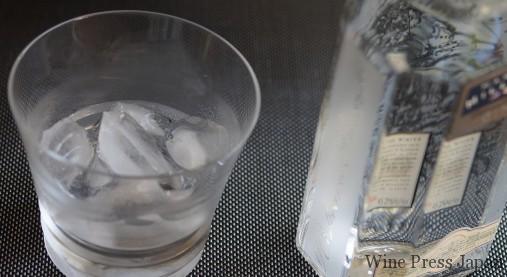ネッド・グッドウィン MW のスペシャル・コラム 第5回 〜ワイン飲みの飲み物〜
10/01

<ワイン飲みの飲み物>
<What Wine Drinkers Drink / the original text is followig this translation >
ワイン業界の人間はワイン以外に何を飲むのか、とよく尋ねられる。ワイン業界といっても、ワイン以外の飲み物の嗜好はワインと同じように人それぞれなのだが(ともあれ、今の時代、ボルドーを飲むソムリエがどれくらいいるだろう)、ワインのボトルが空いた後、ついつい手が伸びる飲み物の選択肢は幅広い。「飲み物」といっても、その多くがアルコール飲料になるのが普通だ。
ビール
オーストラリアのワインの造り手には「偉大なワインを造るには、沢山のビールが要る」という冗談があるように、これは外せない。オーストラリアとニュージーランドのお気に入りはCoopers Pale Aleだが、味の分かる輩達は、アーティザナルな醸造所のビールに傾倒している。ベルギーやドイツなど伝統的にビール・カルチャーを持つ国から、オーストラリア、アメリカ、興味深いのは日本まで、多種多様だ。ビール文化の若い国々ではIPAスタイルにご執心なようで、私のお気に入りも多い。
Indian Pale Aleの頭文字であるIPAは、イングリッシュは草っぽい香りで、アロマティック。お酒としても弱いスタイル。アメリカンは刺激も迫力もずっと強く、ダブル、あるいはトリプルIPAと呼ばれるようなスタイルだ。この刺激の強さはホップの性質と使用量によるもので、ホップはアメリカ西海岸の土着品種。酵母に対してホップの割合が高くなる程、アルコール度は高くなる。ホップが発酵を促進するだけでなく、含まれる油脂は保存料の役割も果たす。だからこそ、インドやその他の地域でも、猛暑とカオスを乗り越えて帝国主義の追従者の喉の乾きを癒すことができたIPAは、広大な大英帝国のあちらこちらで造られてきた歴史があるのだ。
アルコールを鮮やかに中和するビターなホップの鼻を刺す旨味、炭酸、キリッとした冷たさという三つ巴が、ワインに次いで、ぐいぐい存在感を増してきたこのスタイルの得意とするところであり、飲んでスカッとするゆえんなのだ。
日本の常陸野、西オーストラリアのFeral Brewing Company’s Hop Hog American IPA、そして言うまでもないFlying Monkeys’ Brewery’s Smashbomb Atomic IPAは、スパイシーでフローラル、柑橘系のアメリカンIPAの好例だ。しかし、新参者が現れる前から存在する、自信に満ちた古株、サンフランシスコのAnchor Breweryが造る、アメリカ最初のシングルホップエール、Liberty Aleを忘れてはならない。
ジン
かつて「母親の堕落(注:18世紀、安いジンがイギリスの社会荒廃を招いた歴史から)」とも呼ばれたジン。旨いプロレタリア主義、万歳!バルセロナ、香港、シドニー、ロンドン、ニューヨークなど、鼓動の感じられる都市ならどこでも、コンテンポラリーなジンのスタイル、生産地、原材料等のチョイスは圧倒されるほど幅広く、現実味がないくらい。ジュニパーの刺激が好きになれない皆さん、恐れることなかれ。好色な過去はあるものの、今は万人に優しいジンがある。
例えば、スペインのDi Mare Ginを試して欲しい。普通のジン同様、無味無臭の蒸留酒がジュニパーや様々な植物で香り付けされている。だが、他の時代の先端を行くジン同様、「伝統的」な植物がクリエイティヴな変身を遂げているのだ。不動のジュニパー、苦みのあるオレンジと、セヴィーリャのオレンジピール、レモンピール、カルダモン、コリアンダーシードなどに、アルベキーナ種のオリーブ、バジル、ローズマリー、タイムが合わさって、地中海的なツイストを生んでいる。柑橘を除いたその他の植物は、穀物を原料としたアルコールの中で24~36時間、それぞれマセレーションされ、別々の銅鍋で蒸留して造られている。
Martin Miller’s、特に Westbourne Strengthは私のお気に入りだ。この蒸留所ではアイスランドで採水した水を使っており、ベースとなる蒸留酒が如才ないレベルに引き上げられている。結果として出来上がるジンには流れるように滑らかなヴェルヴェットのテクスチャーがあり、ジュニパーの果実味を邪魔することがない。結局、奇抜な新手のものであれ、夜更けとともに心をほぐす時に、バーカウンターの端から滴りおちるようなタイプであれ、ジンの核心となるのはジュニパーなのである。
ジンのジュニパーは、抗マラリア薬のキニーネ(炭酸水に溶かすとトニックになる)の苦みをごまかすために用いられたが、今日のアロマティックなジンで用いられるジュニパーは、お酒を美味しくするのが目的で、本物のトニックウォーター(甘ったるいSchweppesではなく)や、ジンベースのクラシックなカクテル、とりわけネグローニの再流行にもつながった。
ネグローニ
ベルモット、ジン、カンパリを同量混ぜたネグローニは、カビ臭いバーの片隅を抜け出し、装いも新たに、世界のワイン愛好家の食前・食後酒のグラスの中にすべり込んだ。アルコール度が高いため、ワインの後の気付け薬か、あるいは迎え酒にするのが好ましいが、ネグローニの味わいはいつになってもたまらないものだ。特に、工業的な甘いベルモットの代わりに、元祖Carpano Anticoを使うと最高。イヤッホウ!
水
忘れがちだが、これを十分に飲むのが吉。ワイン一杯につき一杯、ジンやトニック1杯に対して2杯、ネグローニ1杯には3杯分の水を飲むべし。
(text by Ned Goodwin MW / translated by Ai Nakashima)
THE ORIGINAL TEXT
< What Wine Drinkers Drink / by Ned Goodwin MW>
I am often asked what people in the wine trade drink, aside from wine, that is. While taste in alternate options among those in the trade is individual, as with taste in wine (after all, do many sommeliers drink Bordeaux anymore?), there are a number of beverages that are usually at arm’s reach, slightly beyond the wine bottle just emptied. It is no surprise that most of them are alcoholic.
Beer
Australian winemakers are known to chortle, ‘it takes a lot of beer to make great wine,’ and so it goes. While the favoured tipple on antipodean shores is the rather innocuous Coopers Pale Ale, discerning tastes lean toward an array of beers from artisanal breweries too numerous to list, be they from the classic beer cultures of Germany and Belgium, or Australian, American and curiously, Japanese sources. In these younger beer cultures, a penchant for IPA styles seems to know few limits and I am fond of many.
An acronym for Indian Pale Ale, IPA styles come as the grassier, more aromatic and considerably less potent English expressions, as well as the more pungent and forceful American idiom, sometimes expressed as Double and even Triple IPA’s. The pungency is largely due to the quantity and nature of the hops used, many of which are indigenous to the American west coast. The greater the quotient of hops is to yeast, the higher the alcohol content becomes. Not only do hops lubricate the ferment, but their oil content serves as a preservative. Thus IPA’s historical binds to the far-reaches of the British empire, where this unique style managed to transcend the ravages of heat and chaos to slake the thirst of imperialist lackeys in India and beyond.
Similarly, after wine, a confluence of headier alcohol crisped by a pungent and savoury potion of bitter hops, carbonation and a chill, brings serious appeal and refreshment to this increasingly ubiquitous style of beer.
Japan’s Hitachino, Western Australia’s Feral Brewing Company’s Hop Hog American IPA, in addition to Flying Monkeys’ Brewery’s Smashbomb Atomic IPA, are all superlative examples of the spicier, more citrusy and floral American idiom. However, before the hipster arrivistes there was the poised and confident classic from San Francisco’s Anchor Brewery, America’s first single-hop ale, Liberty Ale.
Gin
Once known as ‘mother’s ruin’, gin, the proletarian-cum-good is cool! If in Barcelona, Hong Kong, Sydney, London, New York or other cities with a pulse, the sheer breadth of choice across styles, origins and botanicals that comprise contemporary gins is astounding and indeed, often quixotic. For those who fail to take to juniper’s spike, fear not. Despite this wonderful drink’s lascivious past, there is now a gin for everyone.
Try, for example, Spain’s Di Mare Gin. As with other gins, a neutral spirit is distilled together with juniper and an array of botanicals. In this case however, as with other hipster gins, the ‘traditional’ botanicals are given a creative makeover. The stalwarts of juniper, bitter orange and Seville orange rind, lemon peel, cardamon, and coriander seed, are in turn blended with Arbequina olives, basil, rosemary and thyme to evince some Mediterranean quirk. All the botanicals except the citrus are macerated individually for 24-36 hours in neutral grain alcohol, before being distilled in a copper pot still, again individually.
Alternatively, try Martin Miller’s gins, especially the Westbourne strength, my favourite. At this distillery, Icelandic water is used to knock the base distillate back to diplomatic levels, imbuing the resultant gin with a seamless and smooth velour that blessedly, does not obfuscate juniper’s bramble. After all, it is juniper that is the grist of gin be it a kinky new-school example, or the type that drips off the edge of the bar while macerating your soul, as the night turns into day.
While the juniper in gin was used to disguise the bitterness of the anti-malarial agent quinine (dissolved in carbonated water to give tonic), the current crop of aromatic gins make for drinking with relish and have lead to a concomitant resurgence in bona-fide tonic waters (rather than the treacly Schweppes), in addition to other classic gin-based cocktails, especially the Negroni.
Negroni
Equal parts vermouth, gin and Campari, the Negroni has hobbled from the corner of fusty bars, dusted itself off and moseyed into the pre and post-dinner glasses of wine lovers the world over. Better served as a stiff drink after wine or as a ‘hair of the dog’ due to its sheer potency, the saveur of a Negroni is timeless, especially when mixed with the original vermouth, Carpano Antico, as a replacement for the industrial sweet stuff. Kerpow!
Water
Easy to forget sometimes, but best to drink plenty of this stuff. Try a glass of water for every glass of wine consumed; two for every Gin and Tonic; three for every Negroni.










最近のコメント